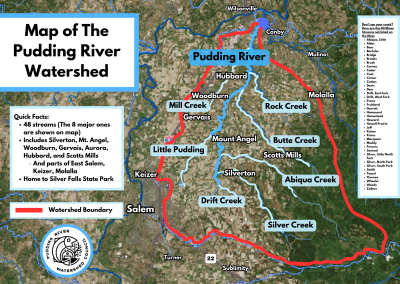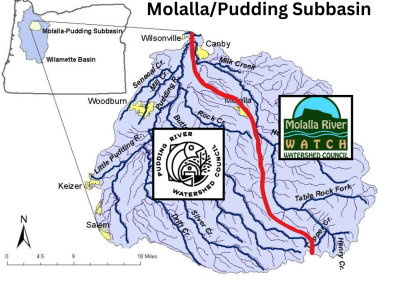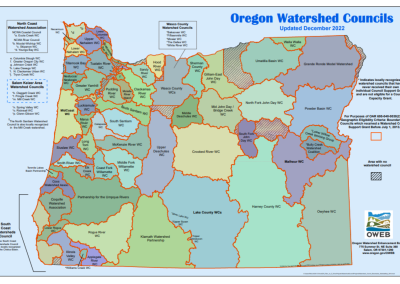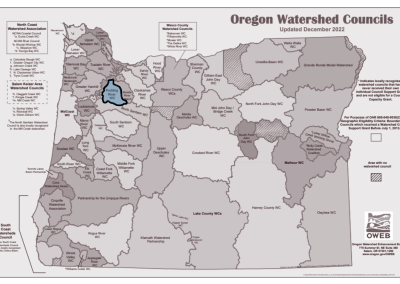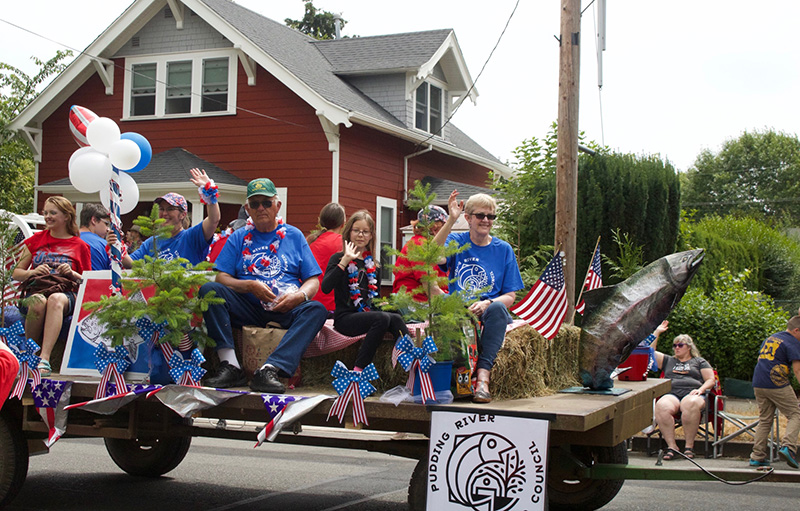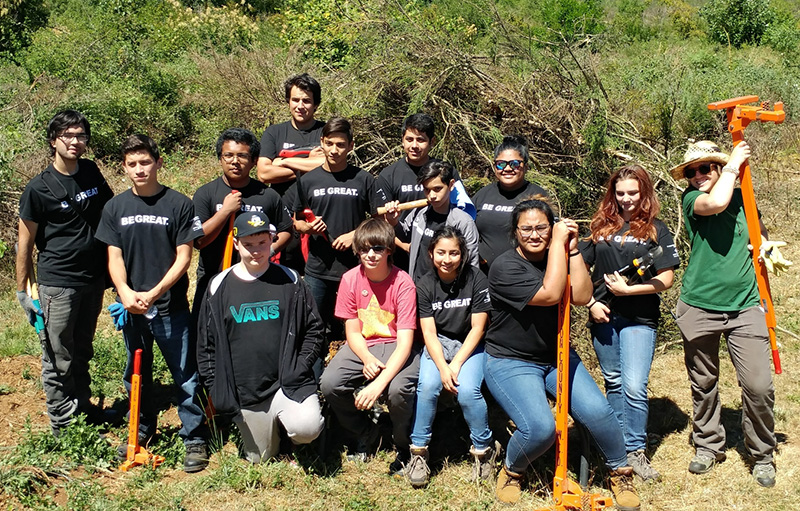QUICK WATERSHED FACTS
Size
528 square miles
Streams
8 major streams
40 minor streams
Stream Miles
205 stream miles just on major streams
Staff
Only two people to cover the entire watershed!
About the Watershed
WHO WE ARE
The council is a group of diverse people who are committed to public collaboration for natural resource conservation efforts. The council’s main roles are to provide a place for public participation, and to serve as a medium for communication between the civil, governmental and private sectors. The council aims to help citizens be informed about the watershed’s current conditions and plans for its use and management.
Get involved in the Pudding River Watershed Council to make your opinions about our watershed enhancement be heard
Our Watershed
Take some time to read about where we work and play— Oregon’s Pudding River Watershed.
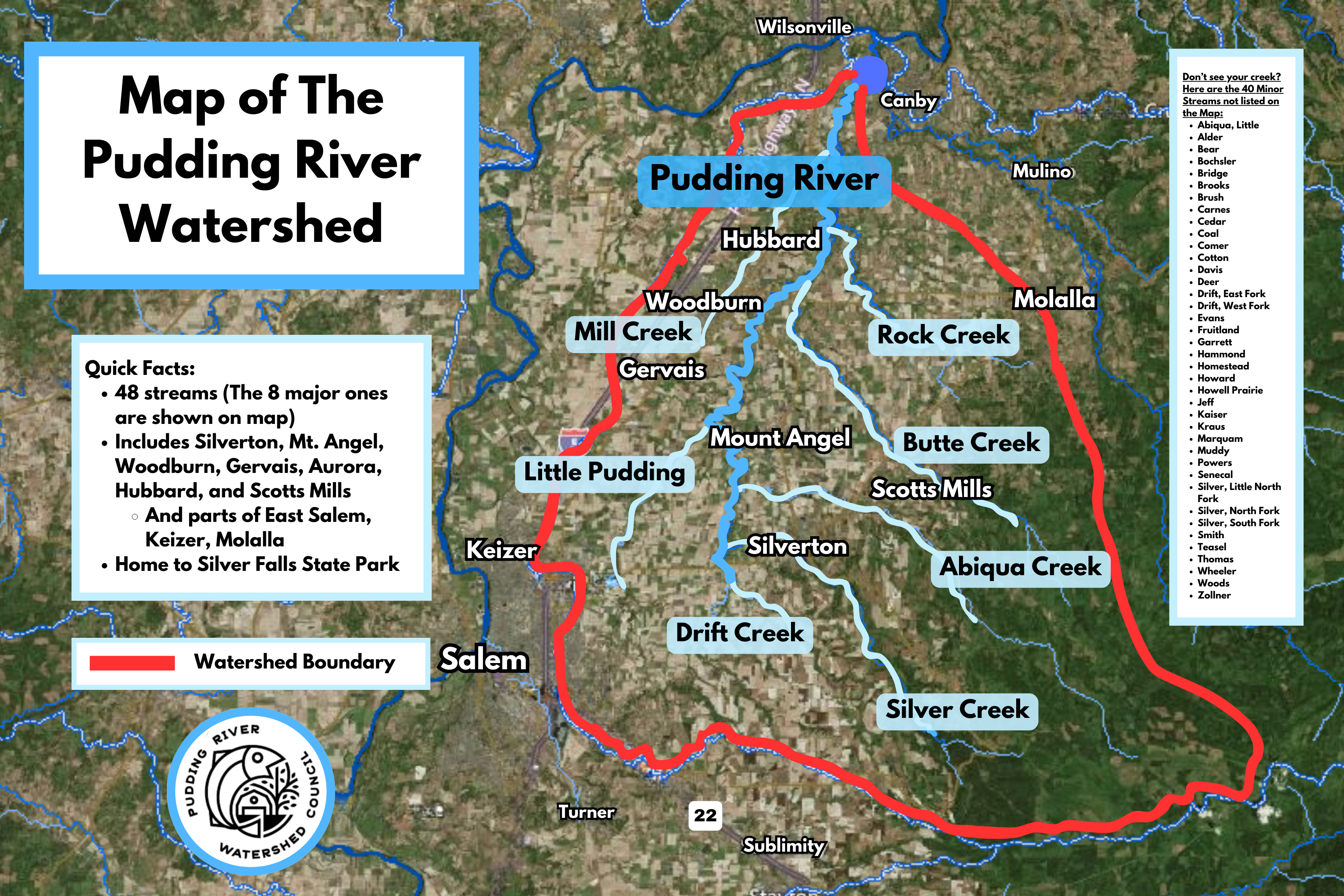
Molalla-Pudding Subbasin
Showing the boundary between Pudding River WC and our sister watershed to the east
OUR MISSION
“The PRWC mission is to provide voluntary collaborative opportunities for local private citizens and interested stakeholder groups to cooperate in protecting, restoring, improving and sustaining the health of the watershed. The council encourages community engagement in planning and implementing restoration activities.”
FOCUSED PRIORITIES
Research and Monitoring
Increasing the knowledge base of the watershed values and functions
Protection
Advocating for policies, practices, programs in land use, transportation and planning
Restoration and Enhancement
Managing revegetation, habitat enhancement, flood conveyance, and fish passage
Stewardship
Facilitating volunteer activities to increase public outreach, education, and training
HISTORY
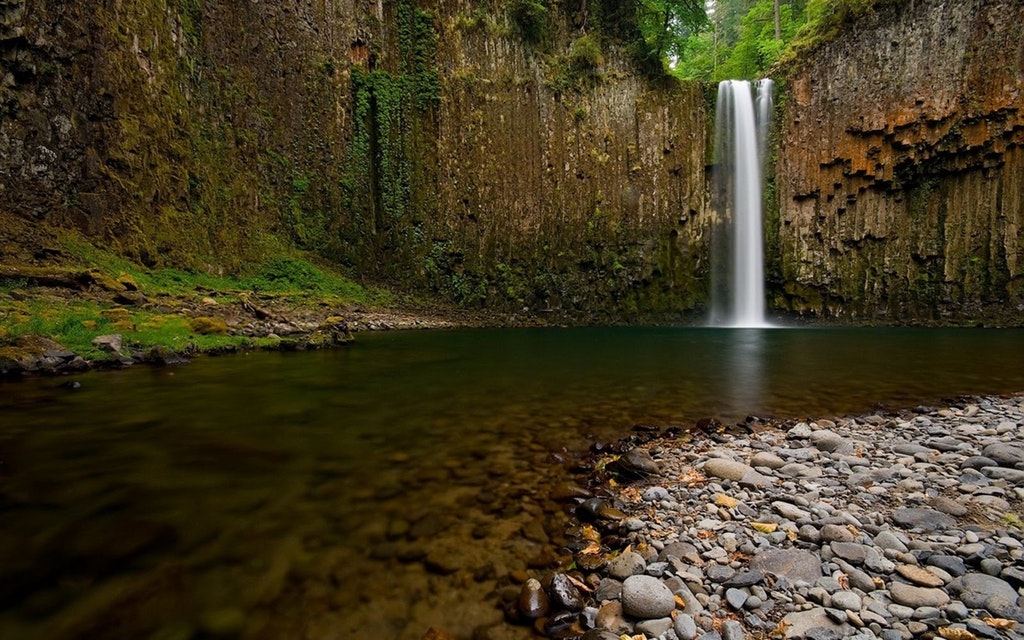
WHERE WE WORK
Oregon’s Pudding River Watershed
The Pudding River reaches from the foothills of the Western Cascades to the Willamette Valley floodplain. Over 12,000 years ago, glacial activity in the Cascades poured water and sediment into the Willamette Valley, covering the original stream system. In the post-glacial period, this area became warmer and dryer. Oak savannah became the dominant plant community. Traditional food sources like camas bulbs, fish, and game nourished Native people for thousands of years (Orr, 1992).
Download detailed history pdf
This basin is the ancestral homeland of the Kalapuya Indians. In the 1840s, much of the Kalapuya’s land was claimed by Euro-American pioneers who came by wagon train. Silverton was established in 1854 followed by many of the neighboring towns. With colonial settlement, forests were logged to create land for agricultural production. Wetlands were converted to farmlands through dredging, clearing, and tilling. Sawmills appeared on every tributary of the Pudding River system. Logs were sent floating down river. Large wetlands and lakes were drained to grow crops like berries, fruits, beans, and grasses. With the fruit crops came cannery operations, which dumped by-products into the rivers. All of these activities changed the water quality and even the shape of the river (Orr, 1992).
The history of logging and agriculture have taken a toll on the ecology of the basin, threatening endemic fish species like the Oregon chub and the Willamette Basin winter steelhead and spring chinook salmon. That is why today, the Pudding River Watershed Council is protecting and restoring important habitats for fish and wildlife. The Pudding River continues to support important native species like the cutthroat trout, pacific lamprey, and western pond turtle (ODFW, 2018). As a community, we can find ways to be better stewards of these precious resources and the local river systems we all rely on.
FREQUENTLY ASKED QUESTIONS
What is a watershed council?
Why do watershed councils exist?
How do watershed councils provide an important link for investment in the area?
What is a watershed?
What makes the Pudding River Watershed unique?
What are the watershed boundaries?
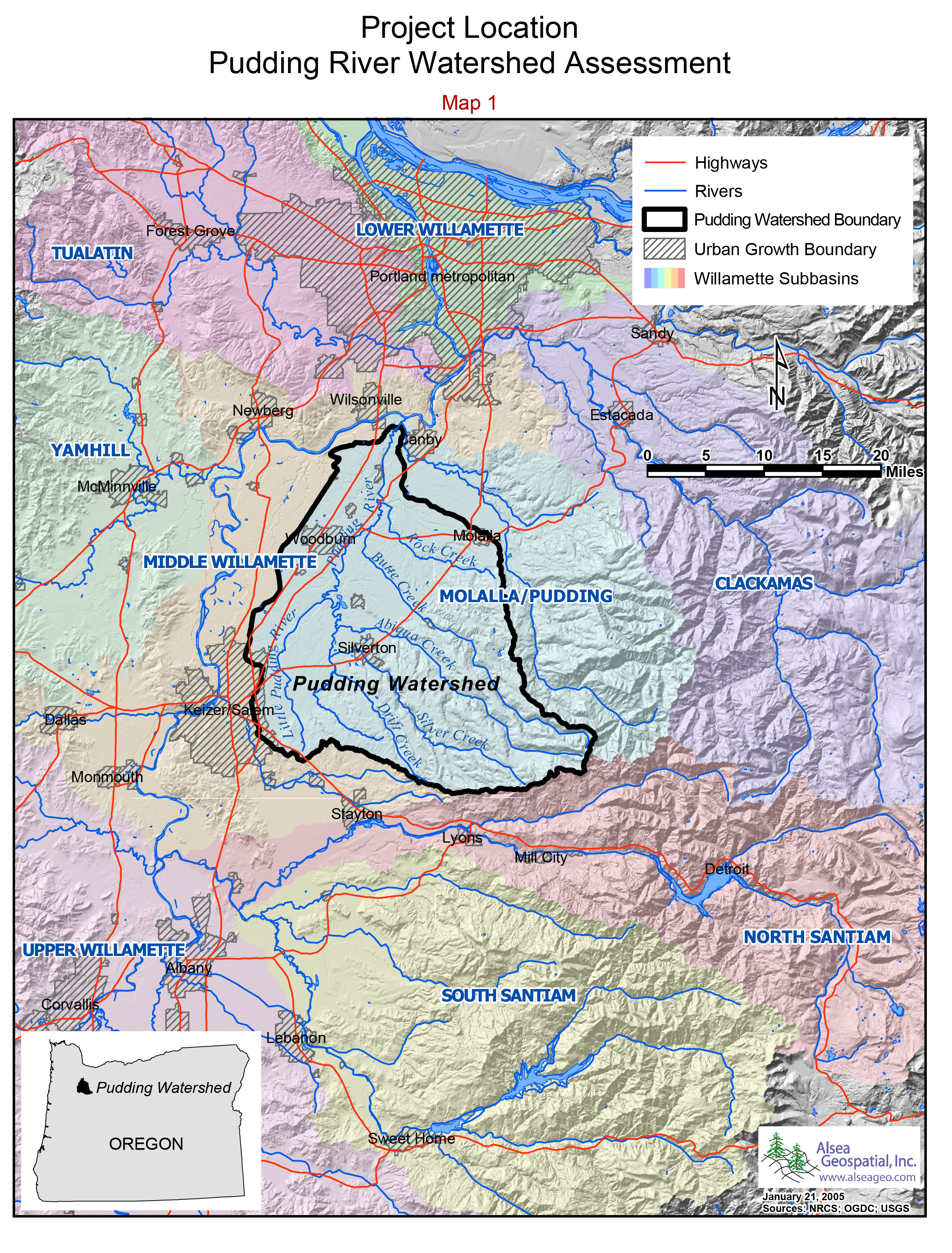
Want to help? Don't wait!
We would love to share all the ways you can make a difference in your community and environment by volunteering, donating, or spreading the word!

